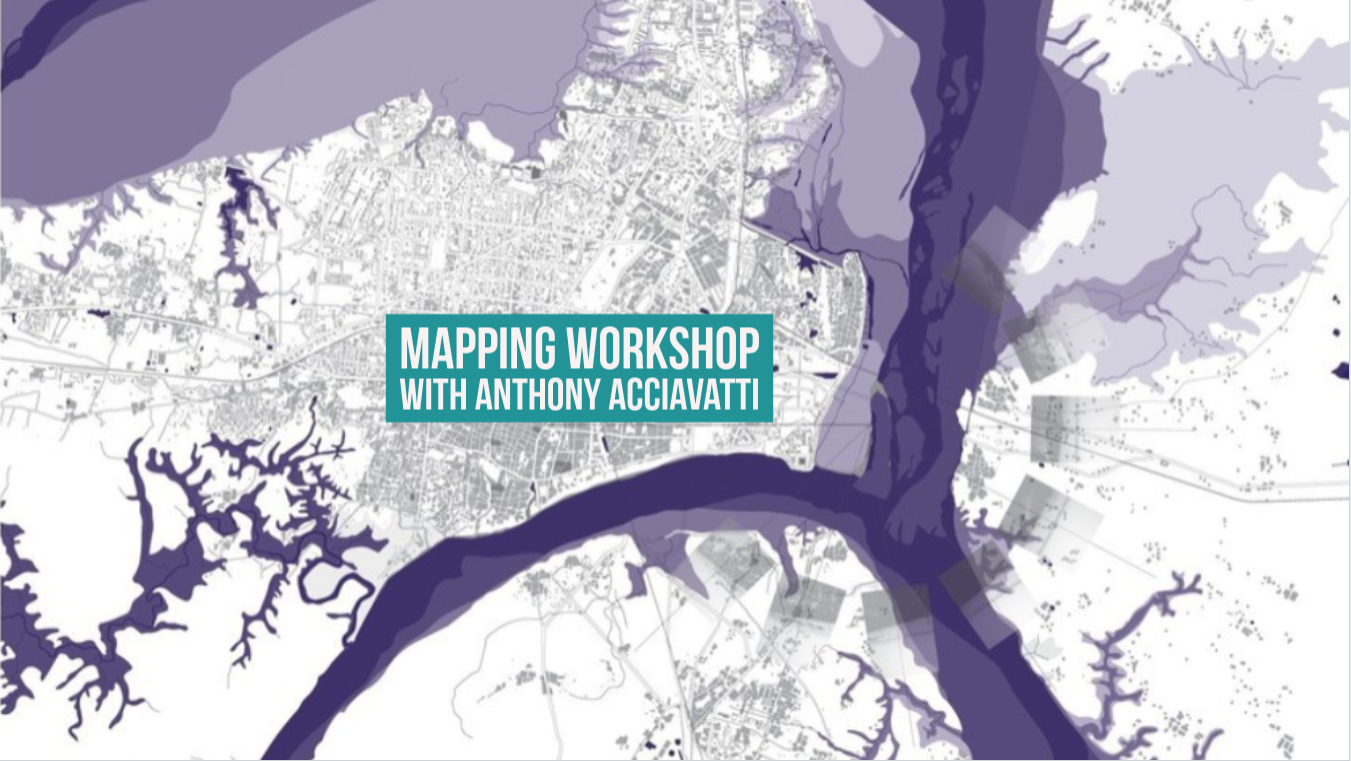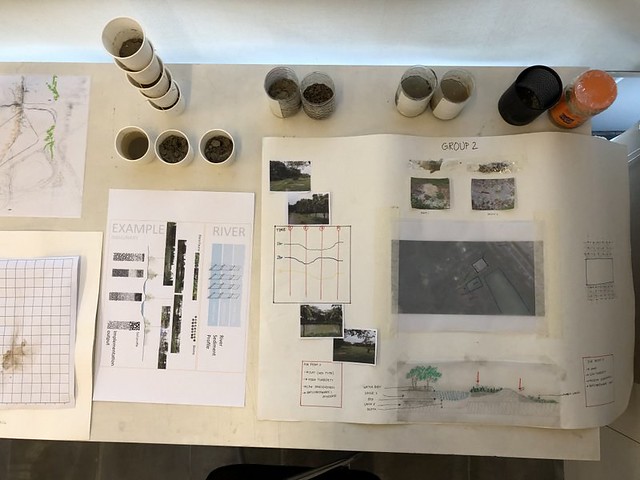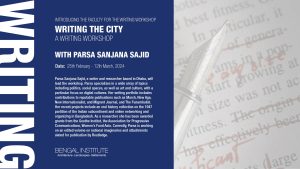
Mapping Workshop with Anthony Acciavatti
Sat 28 Apr - Sun 29 Apr' 18
Changes of State: Making Instruments in a Monsoonal Landscape - A two-day-long workshop with Anthony Acciavatti, 28th - 30th April, 2018 at Bengal Institute.
This workshop was set up to explore the intersections between hands-on making and scientific knowing. While these two worlds are thought of as completely separate, the experimentation with everyday materials and technologies ensued in the workshop to investigate the rhythms of the monsoons and the dynamism of soil and water. Particularly, the changes of states of matter and how they correspond with spatial, political, and social changes were highlighted. Through lectures, discussions, and experiments, both individually and collectively, the critical and imaginative faculties were meant to be sharpened when it comes to the dynamism of the monsoons.
Lecture 1: Mapping the River Ganga with a focus on Ganges Water Machine: Designing New India’s Ancient River. Drawing from the sciences, art, and architecture, this lecture explored different techniques of mapping and imaging environmental uncertainty in a monsoonal landscape. In particular, the lecture focused on Dr. Acciavatti’s process of making his own instruments to measure the rhythms of the monsoons and the choreography of people and soil in the Ganga River basin.
Lecture 2: Subjectivity of Measure: This brief talk looked at a few key examples of the subjectivity of measuring. From Indian miniatures to the work of Marcel Duchamp, the presentation foreground how we can begin to rethink what it means to take measure (and image) change over time.
Experiment 1: Sensing with Materials: In this exercise, the participants collectively explored how a series of common materials like packaging tape and cotton socks can be transformed into instruments to take measure. In consultation with Dr. Acciavatti, groups of 2-3 people were prompted to measure some aspect of soil and water. Each group had 2 hours to collectively “hallucinate” on how to misuse these materials and create a new “instrument.” Groups are not to share their prompts with other groups (see experiment 2 for reasons why).
Experiment 2: Exchanging Instruments: Groups exchanged instruments with one another, in effect gifting them to another group to figure out what the device is to be used for. In short, each group had 30-minutes to experiment with an instrument from another group and diagram how they imagine this tool is used.
Each group made a 3-5 minute presentation of what they thought the instruments are to measure and how they work. They compared and contrasted the intended uses and perceived uses of each instrument—all in an effort to collectively hallucinate on what the devices can do.
Lecture 3: Transects: A brief lecture by Dr. Acciavatti on the history of the transect from Alexander von Humboldt through Patrick Geddes to the work of Ian McHarg. The lecture focused on how the transect, both as a mode of drawing and knowing, intersected with the questions and technologies each group was experimenting with throughout the workshop.
Following this, discussion and question and answer with Dr. Acciavatti ensued. The participants collectively speculated on the ways in which the instruments devised by the groups might be used to draw transects.
Experiment 3: From Technology to Transect: Dr. Acciavatti introduced the final experiment where each group worked toward drawing a transect with their instruments. The goal of this exercise was to experiment with how we engage changes of state and how we go about drawing them in a monsoonal landscape. In short, each group were to rethink part-to-whole relationships from the scale of their instruments and soils to the scale of a transect and the monsoons. Groups worked for two hours, developing their own transects in consultation with Dr. Acciavatti.
Presentations and Discussions: Each group had 5 minutes to present how and why they went about exploring partto-whole relationships and what hands-on making might have to teach us about scientific knowing and vice-versa.
Map image in graphics © Anthony Acciavatti.
Short link to this page for easy sharing: http://bit.ly/BIAcciavatti
Faculty
Past Program
Publication





